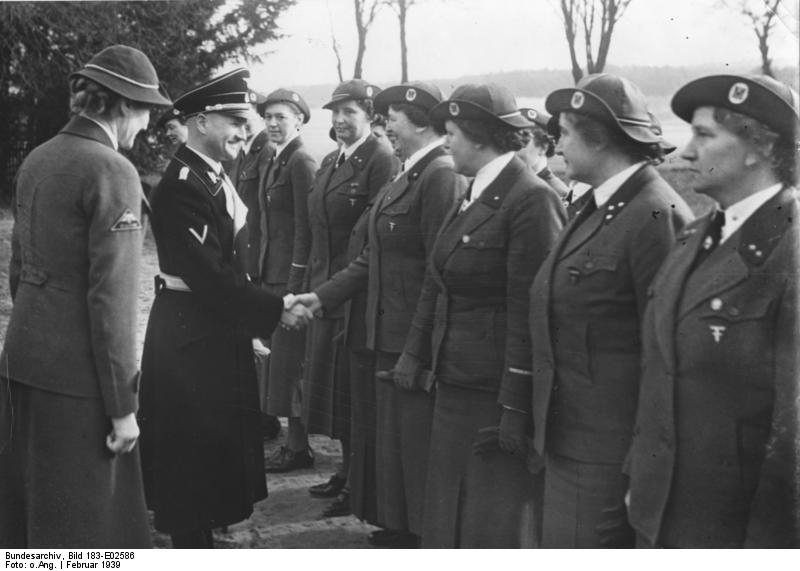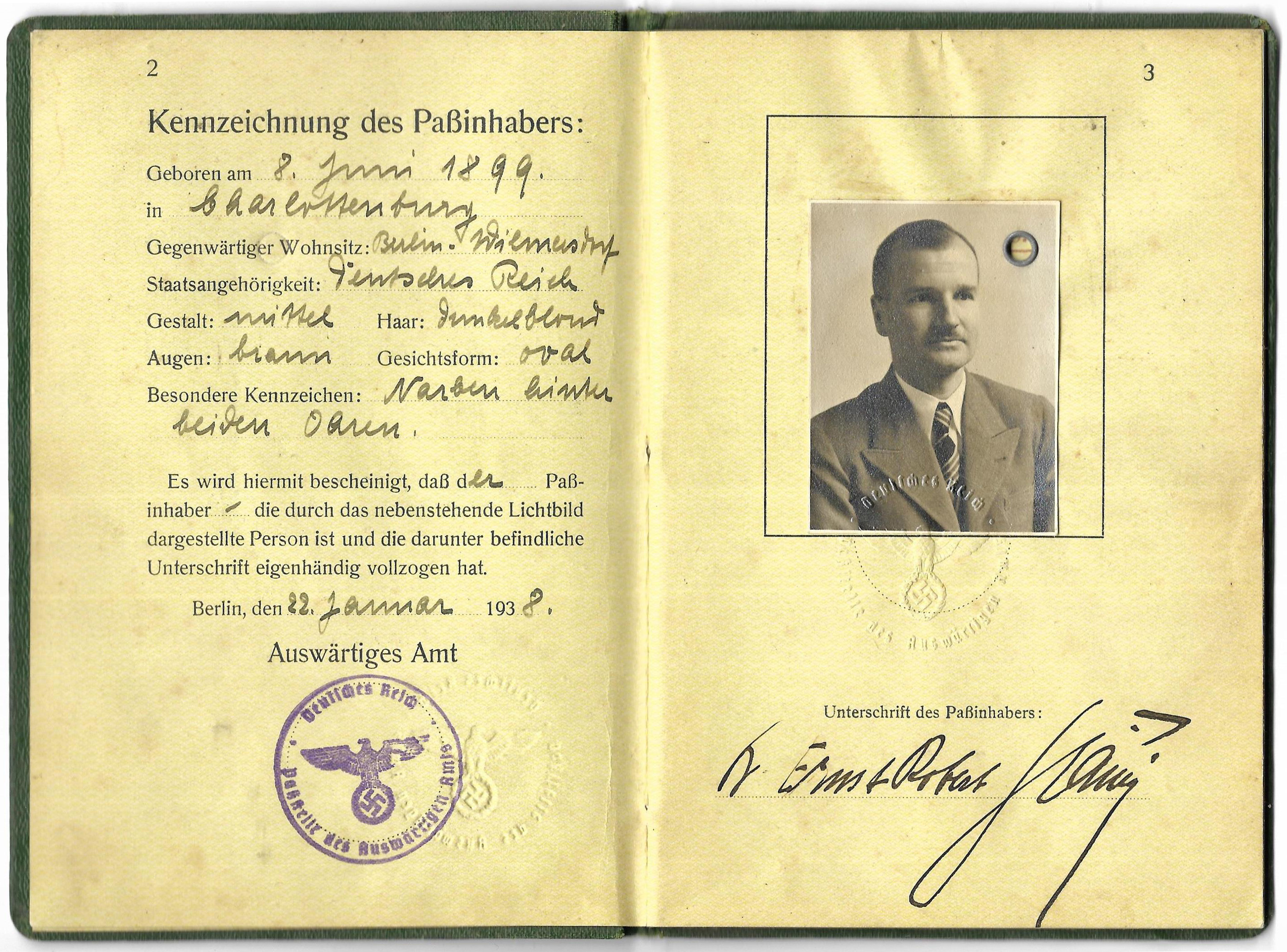1. Overview
Ernst-Robert Grawitz (1899-1945) was a high-ranking German physician and SS functionary during the Nazi era, holding the influential position of Reich Physician of the SS and Police. His career was marked by deep complicity in Nazi medical crimes, including the funding and approval of horrific human experimentation on inmates in Nazi concentration camps and a central role in the Action T4 program, which systematically murdered mentally ill and physically disabled individuals. Grawitz's actions represent a severe betrayal of medical ethics and a profound disregard for human rights, contributing significantly to the atrocities committed under the Nazi regime. As World War II drew to a close, with the Soviet Red Army advancing on Berlin, Grawitz committed suicide with his family.
2. Biography
2.1. Early Life and Background
Ernst-Robert Grawitz was born on June 8, 1899, in Charlottenburg, a district in the western part of Berlin, Germany. He was the son of Ernst Grawitz, who served as a military doctor. His family connections further extended into the Nazi hierarchy through his wife, Ilse, who was the daughter of SS-Obergruppenführer Siegfried Taubert.
2.2. Education
After his early life, Grawitz pursued a medical education at Berlin University, where he successfully obtained his medical doctorate.
2.3. Early Career and Political Affiliation
Grawitz participated in World War I, serving from 1917 and becoming a prisoner of war of the British in 1918. Following his release from the prisoner-of-war camp in 1919, he continued his medical studies. In 1920, he joined the Freikorps and participated in the Kapp Putsch, an attempted coup against the Weimar Republic. By 1929, he was working as an internal physician.
His political affiliations deepened with the rise of Nazism. Grawitz joined the Nazi Party on November 6, 1931, becoming party member number 1,102,844. He subsequently joined the SS on March 29, 1932, with SS member number 27,483. In 1933, he was appointed chief physician at the Berlin-Westend Hospital.
3. Key Positions and Activities
Grawitz held significant medical and administrative roles within the Nazi regime, leveraging his authority to advance Nazi ideology and policies, particularly within the SS and the German Red Cross.
3.1. SS Reichsarzt
On June 1, 1935, Grawitz was appointed head of the SS Medical Office, a crucial position within the SS medical hierarchy. His authority expanded significantly when he became the Reich Physician of the SS and Police (Reichsarzt SS und PolizeiGerman). In 1940, he was further appointed as the General Inspector of the Waffen-SS Medical Service, and in 1941, he received an honorary professorship from Graz University. His final rank was SS-Obergruppenführer and General of the Waffen-SS.
3.2. Role in the German Red Cross
Between 1937 and 1945, Grawitz also served as the Vice President of the German Red Cross (DRK), effectively becoming its de facto head. Under his leadership, the DRK underwent substantial changes, deviating from its original Red Cross principles. Grawitz actively altered the organization's humanitarian mission to align with Nazi ideology and serve the interests of the state, transforming it into an instrument of Nazi policy.

4. Involvement in Nazi Medical Crimes
Grawitz was a central figure in the perpetration of Nazi medical crimes, demonstrating an enthusiastic and active role in the abuse and murder of countless individuals. His actions reflect a deep complicity in severe human rights abuses and war crimes, leveraging his medical authority to facilitate atrocities.
4.1. Support for Human Experimentation in Concentration Camps
As the chief medical officer of the SS, Grawitz was deeply involved in supporting and facilitating human experimentation on inmates within Nazi concentration camps. Researchers, both from within and outside the SS, sought to exploit the captive population for various experiments. To conduct these horrific procedures, interested parties were required to submit their requests to Grawitz. He would then forward these requests to Reichsführer-SS Heinrich Himmler, who would grant the final approval. Grawitz was responsible for funding and approving these requests, demonstrating his administrative and direct responsibility for these abuses. He was known as an "enthusiastic experimenter on concentration camp inmates."
4.2. Participation in the Action T4 Program
Grawitz played a significant role in the Action T4 "euthanasia" program, which systematically murdered mentally ill and physically disabled people, including children, starting from 1939. He was part of the group responsible for overseeing this program and was directly involved in selecting the doctors who would carry out the operational aspects of the killing program.
4.3. Research and Experiments on Homosexuals
Grawitz actively supported and participated in research aimed at finding a "cure" for homosexuality, aligning with the Nazi regime's plan to "exterminate" homosexuals. He met with Carl Værnet, a doctor from Copenhagen, and proposed that Værnet conduct research on behalf of the SS. This research involved cruel experimentation on inmates at Buchenwald concentration camp, targeting homosexual prisoners in an attempt to forcibly alter their sexual orientation.
4.4. Other Concentration Camp Experiments
Grawitz was also connected to or supported other specific human experiments conducted in concentration camps. Notably, he was involved with Karl Gebhardt in the horrific gas gangrene infection experiments carried out on prisoners at Ravensbrück concentration camp between 1942 and 1943. These experiments involved deliberately infecting prisoners with gas gangrene bacteria to test the efficacy of various treatments, causing immense suffering and often death.

5. Late War and Death
5.1. Activities in the Führerbunker
Towards the end of World War II in Europe, as the Allied forces closed in, Grawitz served as one of Adolf Hitler's physicians in the Führerbunker in Berlin. He remained with Hitler during the final days of the war.
5.2. Suicide with Family
As the Soviet Red Army rapidly advanced on Berlin, Grawitz became increasingly desperate. Upon learning that other Nazi officials were attempting to flee the city, he petitioned Hitler for permission to leave Berlin. However, his request was denied. Faced with the imminent collapse of the Nazi regime and the approach of Soviet forces, Grawitz chose to end his life and that of his family. On April 24, 1945, at their home in Babelsberg, Grawitz committed suicide by pulling the pins from two grenades he had placed under a dinner table, killing himself, his wife, and their two children.
6. Assessment and Media Portrayal
6.1. Historical Assessment
Ernst-Robert Grawitz is historically assessed as a key perpetrator of Nazi medical atrocities. His high-ranking positions within the SS and the German Red Cross provided him with the authority to facilitate and directly participate in horrific human rights abuses, including the systematic murder of disabled individuals and the funding and approval of brutal human experimentation in concentration camps. His actions represent a profound abandonment of medical ethics and a deep complicity in war crimes, cementing his place as a figure who actively contributed to the darkest chapters of Nazi Germany.
6.2. Portrayal in Popular Media
Grawitz's life and particularly his dramatic death have been depicted in popular culture. He is notably portrayed in the 2004 German film Downfall (Der UntergangGerman), which chronicles the final days of Adolf Hitler in the Führerbunker. In the film, Grawitz is played by actor Christian Hoening.